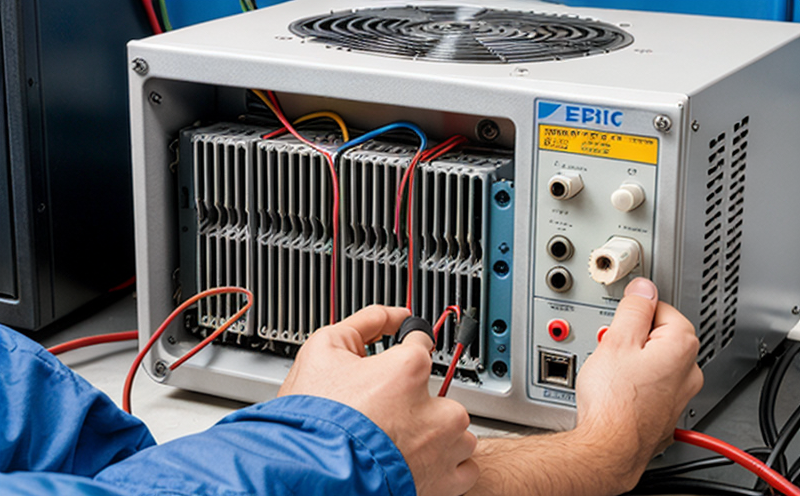IEC 60332-3 Vertical Flame Spread Testing of Cable Bunches
The IEC 60332-3 standard is a crucial part of the broader suite of standards that govern electrical safety and fire resistance in cables. This particular section focuses on vertical flame spread testing, which evaluates the performance of cable bunches when exposed to a controlled flame source. This service ensures that the materials used in marine and ship equipment adhere to stringent international regulations, thereby enhancing overall safety at sea.
The test procedure involves placing a specimen (a cable bunch) vertically on a support frame and subjecting it to a specified flame for a defined duration. The primary objective is to measure how quickly and intensely the fire spreads along the length of the cable. This information is vital in determining the fire hazard potential, which directly impacts the design and selection of cables used in critical maritime environments.
Testing according to IEC 60332-3 helps ensure compliance with international standards such as ISO, ASTM, EN, and IEC. These regulations are essential for manufacturers to meet the safety requirements set forth by various government agencies around the world, including those responsible for maritime transport.
The process begins with thorough preparation of the cable bunch specimens. This involves cleaning and conditioning the cables according to specific guidelines outlined in the standard. The specimen is then carefully positioned onto a support frame that allows it to stand upright during testing. Once prepared, the sample undergoes exposure to the flame source, typically propane or natural gas. The duration and intensity of this exposure are precisely controlled and documented.
After the test concludes, detailed measurements and observations are made regarding the spread rate of fire along the length of each cable in the bunch. Data collected includes the time taken for ignition to start, the maximum flame height achieved, and any signs of melting or burning that might indicate a higher risk of fire propagation.
| Parameter | Description |
|---|---|
| Flame Source Type | Propane or natural gas torch |
| Duration of Exposure | 5 minutes for each specimen |
| Distance from Flame Source | 100 mm (±2 mm) |
| Measurement Points Along Cable | Every 30 cm starting at the bottom of the bunch |
The results of these tests are analyzed to determine compliance with the specified criteria. Compliance ensures that the cables meet safety standards, reducing the risk of fire incidents on ships and marine equipment.
Quality and Reliability Assurance
Implementing IEC 60332-3 testing as part of your quality assurance program ensures that you are adhering to the highest international standards for electrical safety. By incorporating this service into your process, you can be confident in the reliability and performance of the materials used across various applications within marine environments.
This level of scrutiny not only enhances the reputation of manufacturers but also contributes significantly to enhancing public confidence in maritime operations. Regular testing helps identify potential weaknesses early on, allowing for timely adjustments in design or manufacturing processes before they become critical issues.
Our state-of-the-art facilities equipped with advanced instrumentation provide accurate and repeatable results every time. Our team of experts ensures that each test adheres strictly to the prescribed procedures laid out in IEC 60332-3, ensuring consistent outcomes across multiple batches or products over extended periods.
We understand the importance of maintaining high standards throughout your supply chain. Therefore, we offer comprehensive support services including training programs for personnel involved directly with testing activities as well as consulting on best practices related to material selection and design modifications based on test results.
Customer Impact and Satisfaction
By choosing our IEC 60332-3 Vertical Flame Spread Testing service, customers benefit from increased safety measures implemented in their products. This translates into enhanced customer satisfaction through reduced risk of accidents caused by electrical failures or fires onboard ships.
- Improved Safety: Ensures that all components meet stringent fire resistance requirements.
- Regulatory Compliance: Helps companies stay compliant with international standards and local regulations regarding maritime equipment.
- Increased Reputation: Demonstrates commitment to excellence in product development, leading to higher customer trust.
The peace of mind provided by knowing that critical components are rigorously tested according to global best practices is invaluable. It allows customers to focus on other aspects of their business while ensuring they are meeting all necessary safety standards.
Use Cases and Application Examples
- Marine Cable Manufacturers: Ensure product safety and compliance with international standards before launching new products into the market.
- OEM Suppliers to the Marine Industry: Verify that the cables supplied meet stringent fire resistance requirements for use in ships and other maritime equipment.
- Research Institutions: Investigate alternative materials or designs aimed at improving flame retardancy properties of marine-grade cables.





